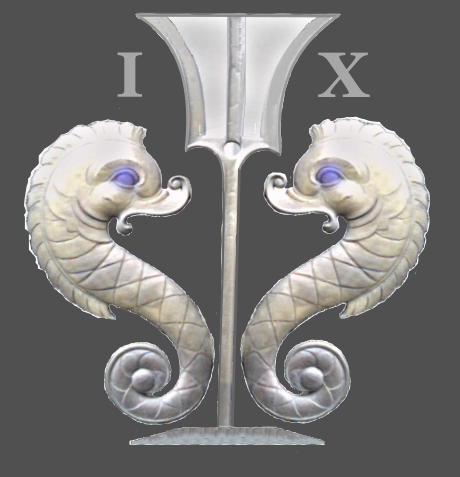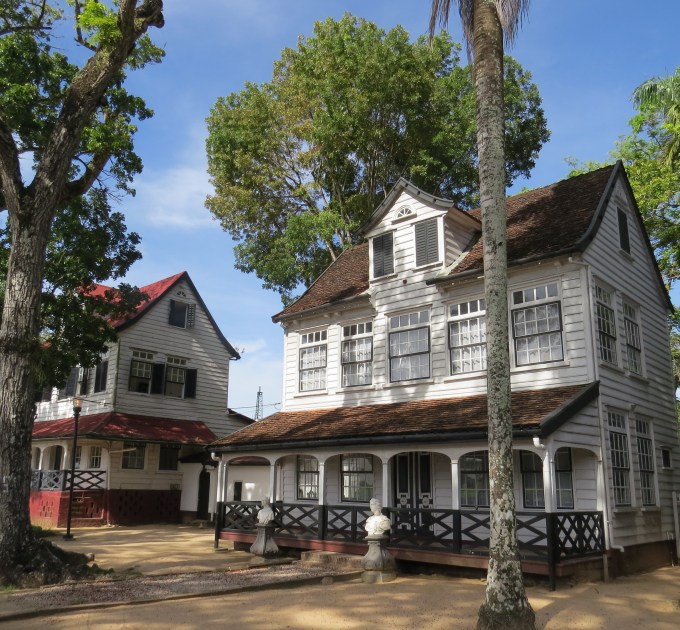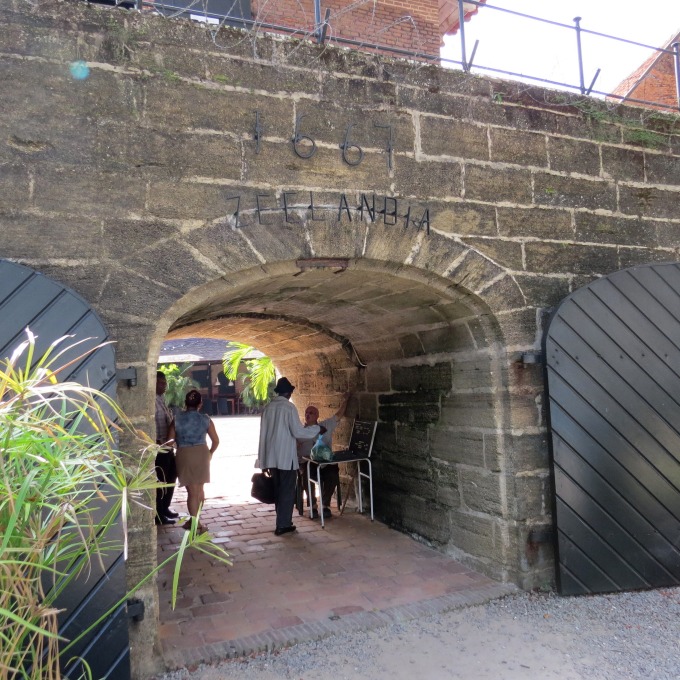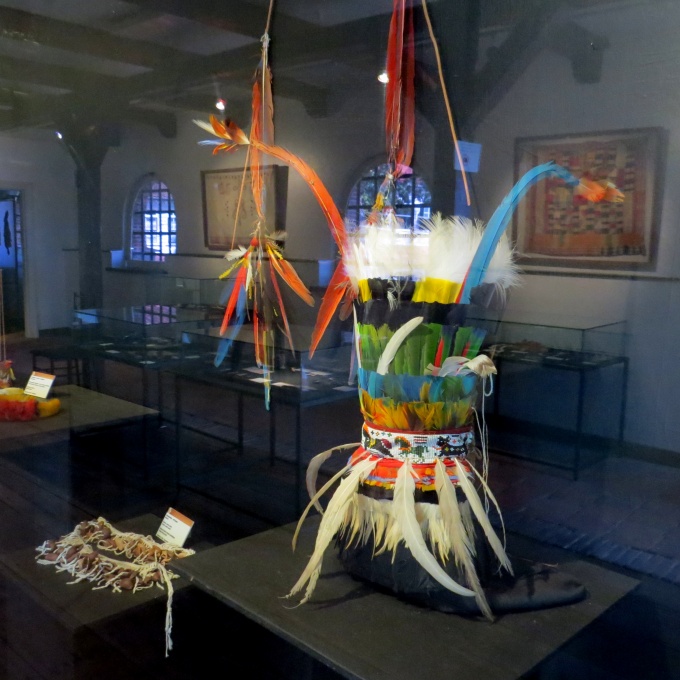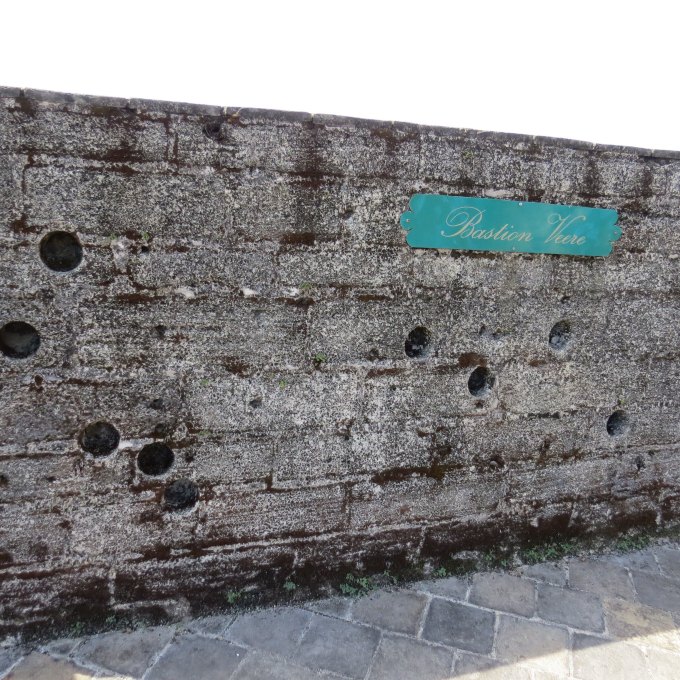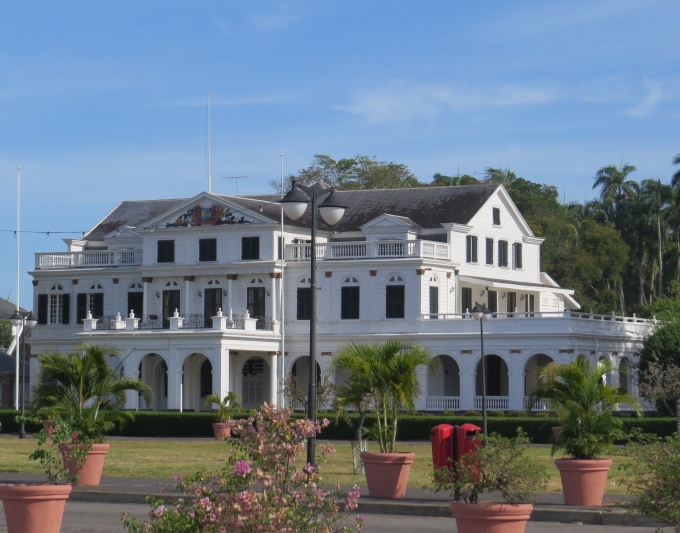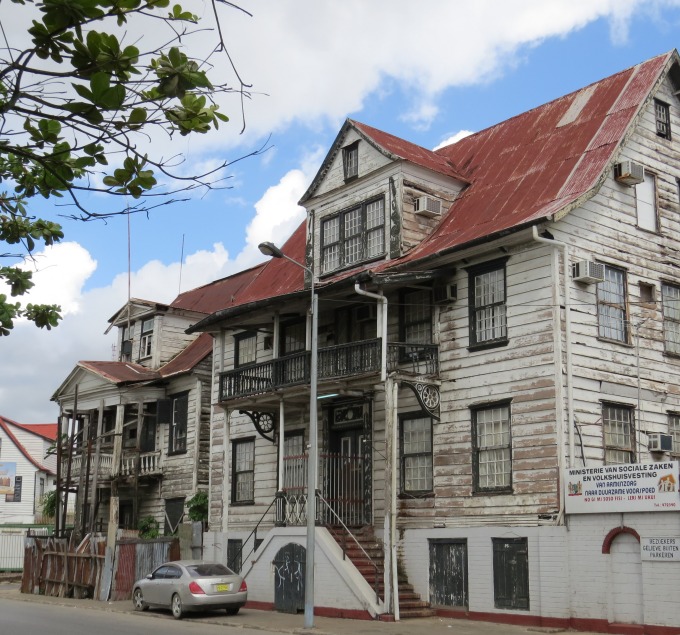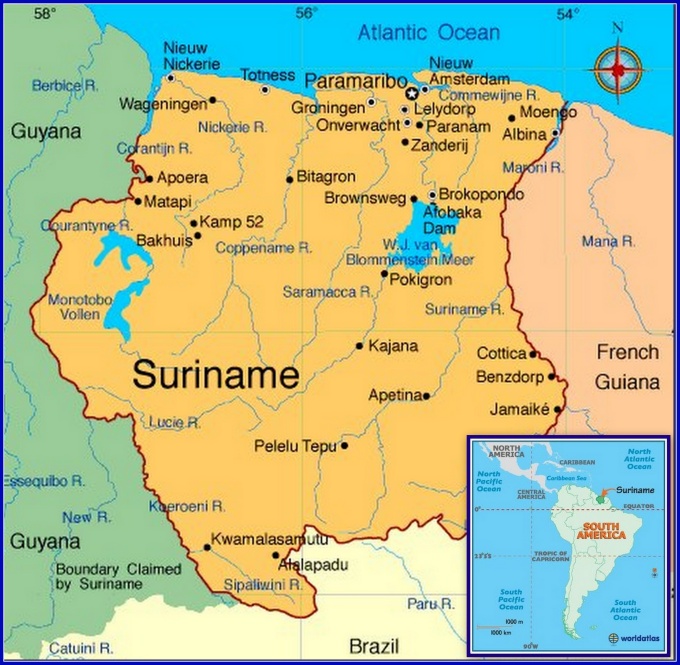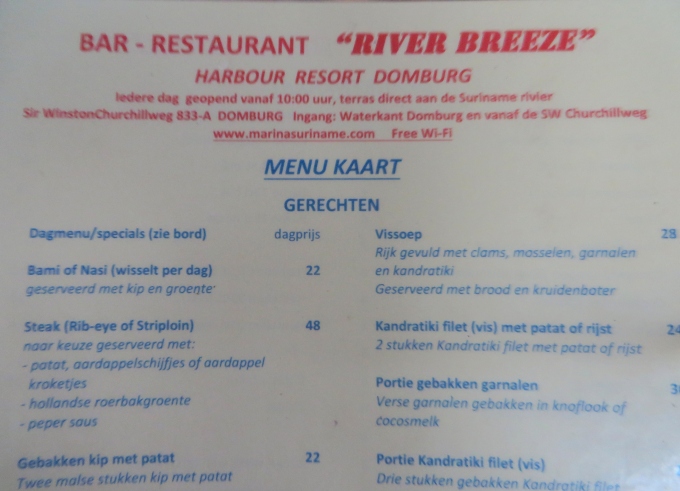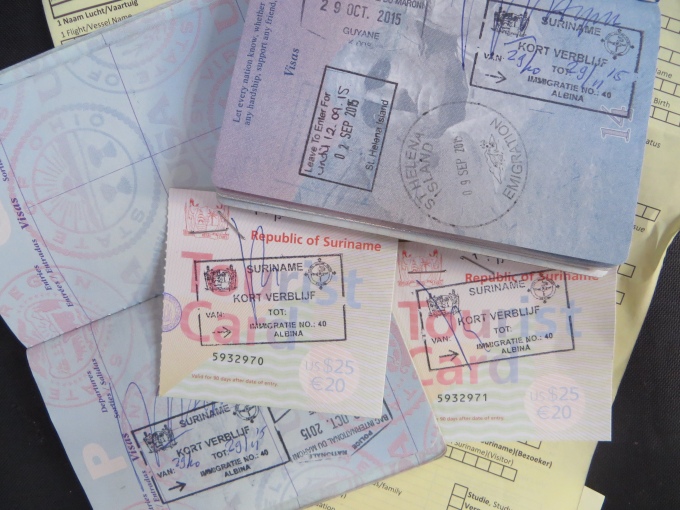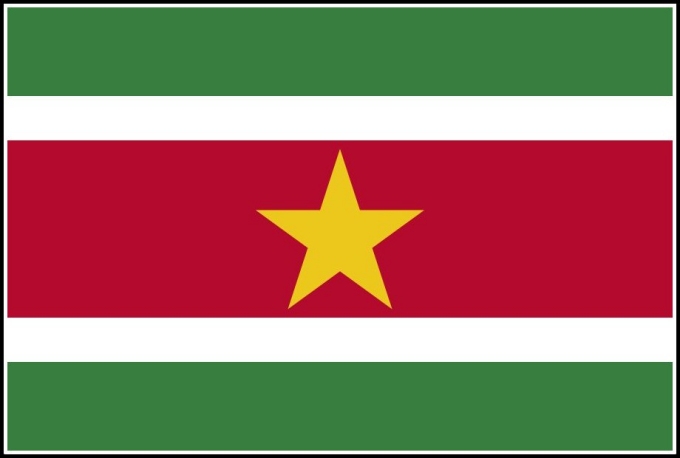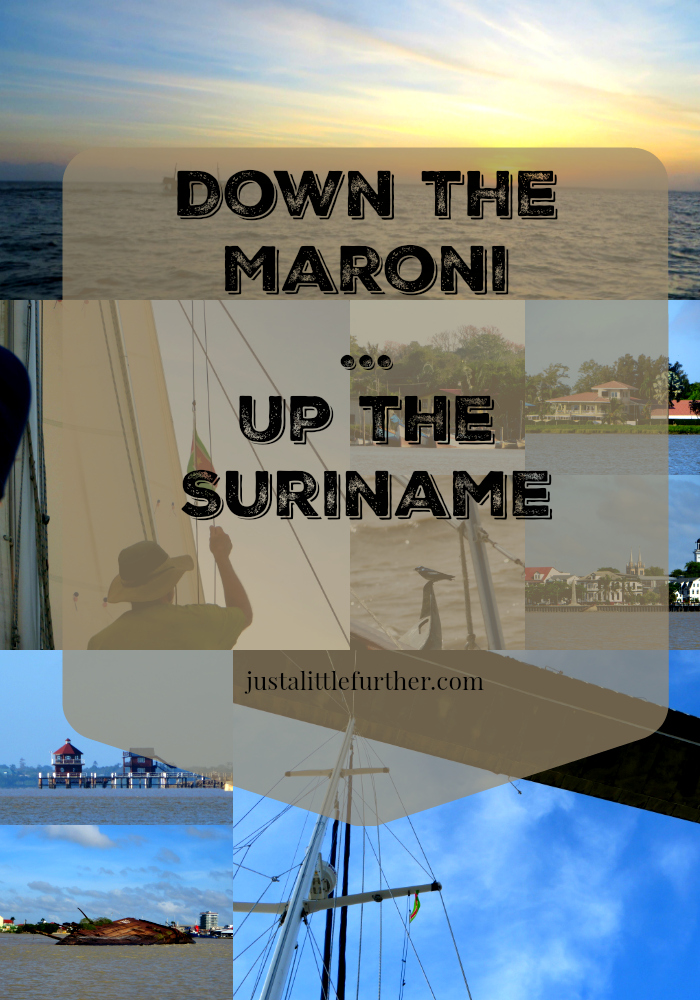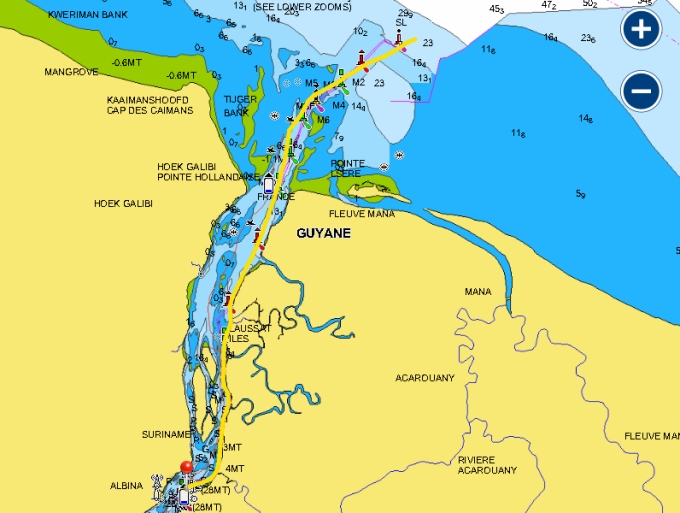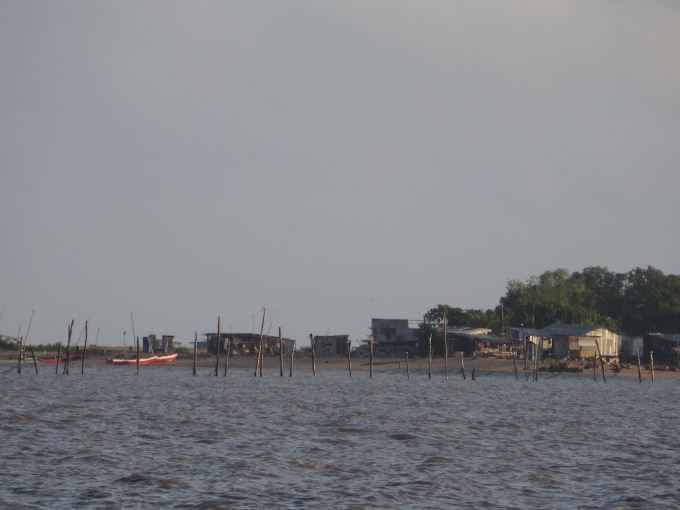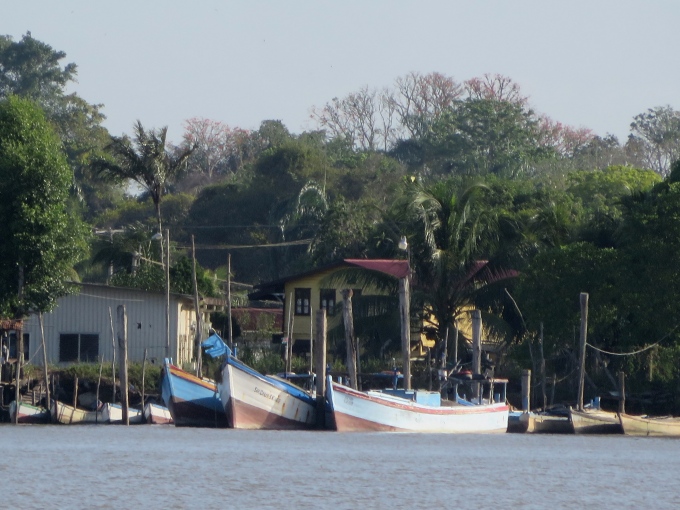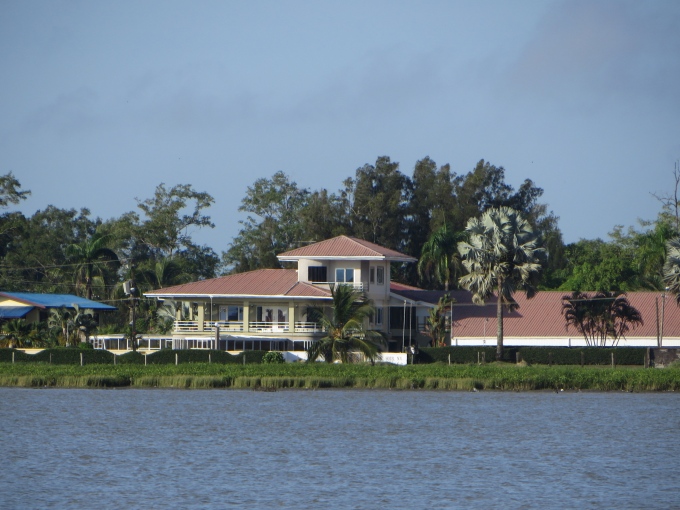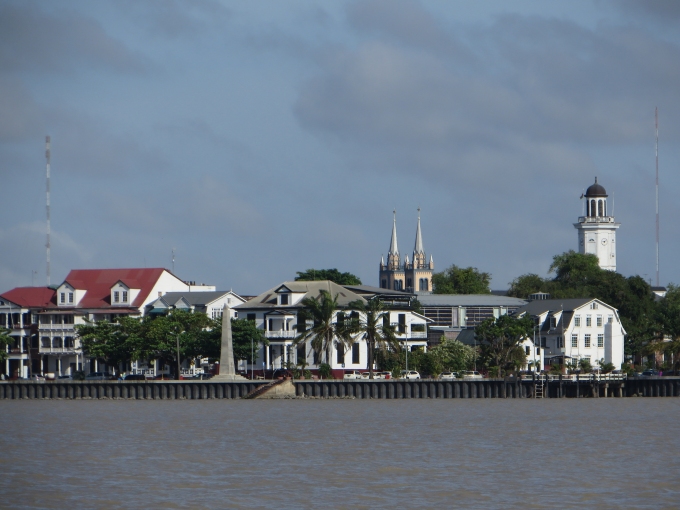Paramaribo - Suriname's Big Smoke
/ Paramaribo (Pah-ra-MAHR-ree-bo), Suriname's capital city, is only 10 nm down the river from us, but by bus … it's a 1.5 hour circuitous ride on a very limited two bus/day schedule. Through the marina, we hired a car from a local fellow … €10/day, unlimited mileage … and off we headed in an old Toyota towards the country's big smoke. The locals call it Parbo ... just like the beer. It seems the best view of the city's foreshore was from Nine of Cups as we sailed past a few days before.
Paramaribo (Pah-ra-MAHR-ree-bo), Suriname's capital city, is only 10 nm down the river from us, but by bus … it's a 1.5 hour circuitous ride on a very limited two bus/day schedule. Through the marina, we hired a car from a local fellow … €10/day, unlimited mileage … and off we headed in an old Toyota towards the country's big smoke. The locals call it Parbo ... just like the beer. It seems the best view of the city's foreshore was from Nine of Cups as we sailed past a few days before.
Paramaribo, probably a corruption of the AmerIndian village name of Parmirbo, was originally settled by the Dutch as a trading post in 1613. It fell into English hands when the Dutch abandoned it and the British built a fort on the site called Fort Willoughby. In 1667, Suriname was given back to the Dutch in the Treaty of Breda. They renamed it Fort Zeelandia, as it is today, and renamed the city New Middelburg (evidently that name never caught on). Paramaribo grew after the abolition of slavery in 1863, attracting many former slaves to the city.
Our first stop was Tourist Info housed in an historic building and located near Fort Zeelandia. For some reason, tourist info is only open Monday-Friday 0900-1530. (Heaven forbid, it would be open on the weekends when people had time off and wanted to get info.) The women were pleasant enough, but had very little information available … a city map, but no country map, and a few commercial brochures for restaurants, hotels and tours.
We decided Fort Zeelandia would be our first stop since it was close by and also had limited hours. On the way to the fort, we walked along a shady, tree-lined street past homes that were the residences of former military officers.
We paid our admission fee (SR$20/pp) and entered the fort which also houses the Surinaams Museum. The fort, “the oldest monumental building in Parmaribo”, has been carefully restored and its brick walls and bastions have historically been the hub of this UNESCO World Heritage city.
The fort's many rooms have been converted into the Surinaams Museum, a rather eclectic mix of Suriname history and culture. A wide open courtyard greeted us on the other side of the short entrance tunnel. A pleasant little cafe, Baka Foto, provided us with our first coffee of the day.
One room was dedicated to the “apotheek”, an old Dutch pharmacy displaying lots of apothecary jars, bottles and pharmaceutical miscellany. All the signs were in Dutch, but we got the gist of the display.
The fort is not very large and never really fulfilled its mission as a fortress. It was too easy to sack … a French pirate, Jacques Cassard, proved the point in 1712 when he plundered the city. We climbed the stairs to the second story and admired the view and the breeze of the Suriname River from the bastions. AmerIndian and Maroon artifacts and handiwork were displayed in several rooms there.
Beyond its role as a fortress, the fort has operated as the site for criminal and slave punishment including hangings. For nearly a century (1872 to 1967), it was used a prison known as “Gebouw” (Devil). It was converted into a museum in 1972, but taken over by a military regime in 1982 until 1994 when it was converted again into a museum. What we missed because of our lack of Dutch language skills, was the sign on the Bastion Verre. A fellow museum visitor, a Dutchman, asked if we'd seen “it”, the site of the Decembermoorden (December murders) that took place December 8, 1982. He led us back to the spot and reiterated the story of 15 prominent men who were tortured and killed on this spot because they criticized the current government. Bullet holes in the wall attest to their fate. According to their website, “The events remain controversial today, as the exact circumstances are still unclear, but the current president of Suriname is the main suspect.”
Climbing to a dusty, stuffy, hot attic area, we found information on Suriname's independence in 1975, as well as small displays on the influences of different immigrant groups especially Indian, Chinese and Indonesian. The fort and museum were a good introduction to Suriname and the city.
It was time for lunch and we were hankering for a roti, those delightful Indian creations of curry wrapped in flatbread … kind of like an Indian burrito. We found a roti shop (they're everywhere) and indulged ourselves. We washed them down with a djogo of cold Parbo, the national beer and then got under way again.
Back on our walking tour track, we walked past the Presidential Palace, a pretty impressive place opposite Onafhankelijkheidsplein (say that three times fast … actually, say it just once if you can) aka Independence Square.
The Ministry of Finance building incorporated the clock tower we'd seen when we'd sailed past. We noted on closer inspection that the clock was about 40 minutes fast.
The Palmentuin (Palm Tree Garden), just behind the Presidential Palace, is Parmaribo's only public park. Originally a 17th century vegetable garden, the 10-acre in-city park is home to about 1,000 palm trees, providing shade along its meandering paths.
We headed to the Waterkant (waterside), the road along the foreshore, where many of the historic wooden mansions stand. The designs are clearly inspired by Dutch architecture of the time, but we're told “incorporate a range of indigenous techniques and local materials.” Painted a crisp black and white, the Dutch style was evident in its eight-over-eight windows, dormers, shutters and decorative embellishments, reminiscent of houses we'd seen in South Africa not so long ago. Most of the current mansions originate from the first half of the 19th century however, as they had to be rebuilt after large city fires in 1821 and 1832. We walked up Mr. Lim A Postraat (Lim A Po Street) for more of the same.
There are probably more dilapidated historic buildings than there are restored ones. Many of the wooden houses are in dire need of restoration, to the point where UNESCO has urged the government to address the problem with threats of revoking the city's world heritage status. Remarkably, despite the decrepit look of the houses, many still appeared to be occupied.
Enough walking for the day, we headed to our hotel for the evening...the Hotel Paramuru. After my success in Cayenne scoring a beautiful suite at the Hotel Palmistes, I was hoping to continue my winning streak in Paramaribo. I was able to book the penthouse at a weekend rate of $50US per day. The website pics looked great. The description was awesome. The reality … a bit disappointing. The elevator ran to the third floor and we lugged our luggage up a rickety metal/wood spiral staircase to reach the “penthouse”. The bath was a shower/toilet/sink only with much to be desired. The bed was lumpy, the pillows thin and the bed linen … well, let's just say, it wasn't quite what we expected. But you know what? It really didn't matter. It had A/C that worked, the shower had hot/cold water and there was a little fridge that managed to keep our Sauvignon Blanc cold. We were together exploring Paramaribo, Suriname. Really … who can complain?
Today's Dutch word “djogo” -jug, in this case a liter bottle of Parbo beer.
More Parbo exploring tomorrow.
Book a trip to Paramaribo, Suriname...or anywhere you want! Find the best deals here:
